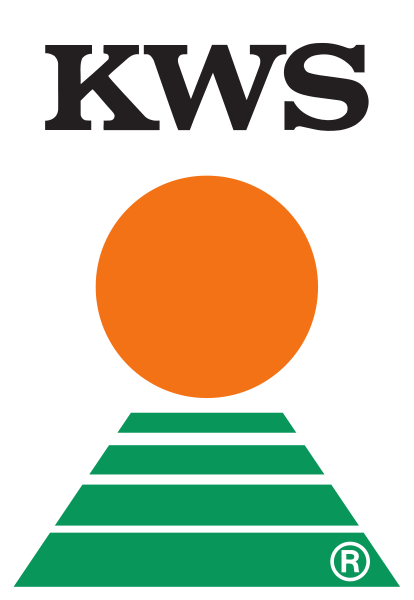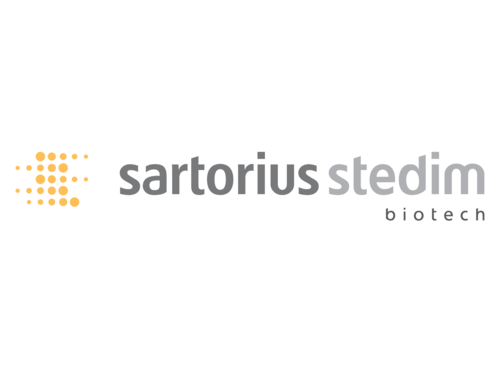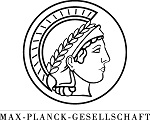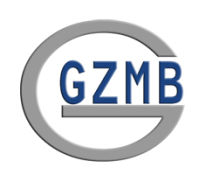Team:Goettingen/Project/Methods
From 2012.igem.org
| Line 664: | Line 664: | ||
<b>Execution</b><br> | <b>Execution</b><br> | ||
<u>First round of selection</u><br> | <u>First round of selection</u><br> | ||
| - | - | + | - Thaw one 1 ml cryostock of the library in BL21 and pour into a 200 ml flask filled with LB-media with chloramphenicol <br> |
| - | - | + | - Inoculate the BL21 strain with the parent plasmid in 5 ml LB media with chloramphenicol |
| - | - | + | - Grow the cultures over night at 37 °C with approx. 180 rpm <br> |
| - | - 7 + 1 control (whatmanpaper with H2O) 12 cm petridishes | + | - Fill 7 + 1 control (whatmanpaper with H2O) 12 cm petridishes with 0.3% tryptone-swimming agar with chloramphenicol<br> |
| - | - 100µl of the attractant | + | - Apply 100µl of the attractant to a steril 2x2cm whatmanpaper respectivly and position it in the center of a petridish <br> |
| - | - | + | - Spin down at least 1.5 ml of the culture containing the library and at least 1.5 ml of the culture containing the BL21 strain with the parent plasmid with 1.5 X g for 10 minutes <br> |
| - | - | + | - Discard the supernatant and resuspend the pellet in the remaining medium <br> |
| - | - 3 times 5 µl of the library and once 5 µl of the reference strain (Bl21 with the parent plasmid) | + | - Drop 3 times 5 µl of the library and once 5 µl of the reference strain (Bl21 with the parent plasmid) respectively, on each plate <br> |
| - | - | + | - Let the drops dry for at least 20 minutes until inverting the plates and placing in the incubator at 33°C over night <br> |
<br> | <br> | ||
<u>Second round of selection</u><br> | <u>Second round of selection</u><br> | ||
| - | - | + | - Determine the drop with the fastes and most directed swimming behaviour on each plate <br> |
| - | - In order to select the fastest cells the cells containing agar | + | - In order to select the fastest cells the cells containing agar is cut out: |
| - | <div style="text-indent:10px;">- the yellow eppendorf tips | + | <div style="text-indent:10px;">- Cut the yellow eppendorf tips of to the first mark (approx 1 cm)<br> |
| - | <div style="text-indent:10px;">- the first cut off | + | <div style="text-indent:10px;">- the first cut off is shortly befor the swimming front --> I<br> |
| - | <div style="text-indent:10px;">- the second cut off | + | <div style="text-indent:10px;">- the second cut off is on the swimming front -->II<br> |
| - | <div style="text-indent:10px;">- the third cut off | + | <div style="text-indent:10px;">- the third cut off is shortly behind the swimming front --> III<br> |
| - | <div style="text-indent:10px;">- each cut off | + | <div style="text-indent:10px;">- place each cut off either with or without the tip in at least 0.5 ml LB media in an test tube or an E-cup<br></div> |
| - | - | + | - Incubate the culturesfor at least 1 h at 37 °C with approx. 180 rpm <br> |
| - | - Meanwhile 7 + 1 control (whatmanpaper with H2O) 12 cm petridishes | + | - Meanwhile fill 7 + 1 control (whatmanpaper with H2O) 12 cm petridishes with 0.3% tryptone-swimming agar with chloramphenicol<br> |
| - | - 100µl of the attractant | + | - Apply 100µl of the attractant to a steril 2x2cm whatmanpaper respectivly and position it in the center of a petridish <br> |
| - | - | + | - Transfer the culturesinto an E-cup and spin them down with 1.5 X g for 10 minutes <br> |
| - | - | + | - Discard the supernatant and the resuspend the pellet in the remaining medium <br> |
| - | - 5 µl of the 3 different library cut offs and 5 µl of the reference strain (Bl21 with the parent plasmid) | + | - Drop 5 µl of the 3 different library cut offs and 5 µl of the reference strain (Bl21 with the parent plasmid) respectively on each plate <br> |
| - | - | + | - Let the drops dry for at least 20 minutes before inverting the plates and placing them in the incubator at 33°C over night <br> |
<br> | <br> | ||
<br> | <br> | ||
| Line 696: | Line 696: | ||
<br> | <br> | ||
<u>Plating of the selected clones</u><br> | <u>Plating of the selected clones</u><br> | ||
| - | - The plates of the third round of selection | + | - The plates of the third round of selection are treated as described before, but the cultures are not spun down <br> |
| - | - 100 µl of a 10^-2 dilution | + | - 100 µl of a 10^-2 dilution is plated on LB-plates containing chloramphenicol respectively <br> |
| - | - | + | - Incubate the plates in an incubator over night at 33 °C<br> |
<br> | <br> | ||
<u>Minipreparation and sequencing of plasmid DNA</u><br> | <u>Minipreparation and sequencing of plasmid DNA</u><br> | ||
| - | - A suitable amount of clones | + | - A suitable amount of clones are selected from each plate and used to inoculate 5 ml LB media with chloramphenicol respectively <br> |
| - | - | + | - Incubate the cultures over night at 37 °C with approx. 180 rpm <br> |
| - | - | + | - Isolate the plasmid DNA according to the instructions of the the peqlab kit <br> |
| - | - | + | - Sequence the plasmid DNAas described |
<br> | <br> | ||
<br> | <br> | ||
<u>Retransformation of the plasmid DNA</u><br> | <u>Retransformation of the plasmid DNA</u><br> | ||
| - | In order to determine wether the observed chemotaxis | + | In order to determine wether the observed chemotaxis is dependent on the cells themselfes or on the inserted vector the isolated plasmid DNA is transformed into fresh BL21 cells according to the described protocol |
<br> | <br> | ||
<br> | <br> | ||
<u>Determination of the swimming behaviour of the freshly transformed BL21 cells</u><br> | <u>Determination of the swimming behaviour of the freshly transformed BL21 cells</u><br> | ||
| - | - Colonies of the freshly transformed BL21 cells (Retrafo) as well as of the selected BL21 clones (Trafo) | + | - Colonies of the freshly transformed BL21 cells (Retrafo) as well as of the selected BL21 clones (Trafo) are used to inoculate 5 ml LB-media with chloramphenicol, respectively and grown over night at 37 °C with approx. 180 rpm |
| - | - 7 x 2 x 3 0.3% tryptone-swimming agar plates | + | - Pour 7 x 2 x 3 0.3% tryptone-swimming agar plates |
| - | <div style="text-indent:10px;">- Each attractant | + | <div style="text-indent:10px;">- Each attractant has 2 additional controls: one time the whatmanpaper is soaked with H2Odest. and the other time with aspartate <br> |
| - | <div style="text-indent:10px;">- The whole approach | + | <div style="text-indent:10px;">- The whole approach is conducted for the "Trafos" as well as for the "Retrafos" <br> |
</div> | </div> | ||
| - | - | + | - Treat and draop the cultures as described<br> |
| - | - | + | - Let the drops dry for at least 20 minutes before inverting the plates and placing them in the incubator at 33°C over night<br> |
Revision as of 22:57, 19 September 2012

|
Language:
| Agarose Gel Electrophoresis
For the analysis of PCR-amplified products, agarose gel electrophoresis is the method of choice. This method takes advantage of the separation
of DNA in dependance of the charge-mass ratio. The separation is based on the electric attraction of the negative charged DNA which is guided towards
the positive charged anode upon application of a current. The PCR samples are run on agarose gels with different percentages according to the product sizes:
small products run faster than bigger products.
Later on, these fragments within the gel are made visible by examination under the UV light to ensure the correct DNA fragment length synthesized in the PCR reaction.
Prior to UV analysis, a staining method of the DNA, here using ethidium bromide (EtBr), is obligatory. EtBr is an intercalating agent which embeddes itself within
the DNA helix. Thus, the absorption spectrum is biased so that it is suitable for DNA detection. The determination of separated molecule sizes is done accodrding
to a common DNA size standard. Cloning Protocols
Cloning Protocols: Chemical Transformation
Competent CellsPreparation of CaCl2 buffer for competent cells! Before you start make sure that the CaCl2 buffer is ice-cold when needed and the centrifuge is cooled to 4°C.
Library Selection
The library containing vectors with the mutagenized tar-gene was transformed into the E. coli strain Bl21. In order to determine certain receptor derivates that enables chemotaxis to a certain molecule a "Library Selection" protocol was determined.
- Cut the yellow eppendorf tips of to the first mark (approx 1 cm) - the first cut off is shortly befor the swimming front --> I - the second cut off is on the swimming front -->II - the third cut off is shortly behind the swimming front --> III - place each cut off either with or without the tip in at least 0.5 ml LB media in an test tube or an E-cup
- Incubate the culturesfor at least 1 h at 37 °C with approx. 180 rpm - Meanwhile fill 7 + 1 control (whatmanpaper with H2O) 12 cm petridishes with 0.3% tryptone-swimming agar with chloramphenicol - Apply 100µl of the attractant to a steril 2x2cm whatmanpaper respectivly and position it in the center of a petridish - Transfer the culturesinto an E-cup and spin them down with 1.5 X g for 10 minutes - Discard the supernatant and the resuspend the pellet in the remaining medium - Drop 5 µl of the 3 different library cut offs and 5 µl of the reference strain (Bl21 with the parent plasmid) respectively on each plate - Let the drops dry for at least 20 minutes before inverting the plates and placing them in the incubator at 33°C over night Third round of selection - See second round of selection Plating of the selected clones - The plates of the third round of selection are treated as described before, but the cultures are not spun down - 100 µl of a 10^-2 dilution is plated on LB-plates containing chloramphenicol respectively - Incubate the plates in an incubator over night at 33 °C Minipreparation and sequencing of plasmid DNA - A suitable amount of clones are selected from each plate and used to inoculate 5 ml LB media with chloramphenicol respectively - Incubate the cultures over night at 37 °C with approx. 180 rpm - Isolate the plasmid DNA according to the instructions of the the peqlab kit - Sequence the plasmid DNAas described Retransformation of the plasmid DNA In order to determine wether the observed chemotaxis is dependent on the cells themselfes or on the inserted vector the isolated plasmid DNA is transformed into fresh BL21 cells according to the described protocol Determination of the swimming behaviour of the freshly transformed BL21 cells - Colonies of the freshly transformed BL21 cells (Retrafo) as well as of the selected BL21 clones (Trafo) are used to inoculate 5 ml LB-media with chloramphenicol, respectively and grown over night at 37 °C with approx. 180 rpm - Pour 7 x 2 x 3 0.3% tryptone-swimming agar plates - Each attractant has 2 additional controls: one time the whatmanpaper is soaked with H2Odest. and the other time with aspartate - The whole approach is conducted for the "Trafos" as well as for the "Retrafos"
- Treat and draop the cultures as described- Let the drops dry for at least 20 minutes before inverting the plates and placing them in the incubator at 33°C over night SequencingUnder process... Standard PCR
The polymerase chain reaction (PCR) is a method for in vitro-amplification of DNA sequences. For the amplification of a
DNA fragment the heat resistent enzyme DNA polymerase is responsible. There are several types of DNA polymerases purchaseable, e.g. some of which are very fast
or are not error-prone due to proof-reading activity. In order to choose the appropriate DNA polymerase, this link might be of interest:
http://barricklab.org/twiki/bin/view/Lab/ProtocolsTaq; 06/30/2012. QuikChange Protocol
To remove disturbing restriction sites within the gene for the successful usage of BioBrick system, the QuikChange reaction is used.
Program: -> 1 min 96°C
-> 5 min 72°C -> Store at 4-8°C After PCR add 1 μl DpnI directly into PCR tube. Incubate reaction 1-2 h at 37°C. Transform 5 µl into 50 µl competent cells. |
↑ Return to top
Team Göttingen Sponsors and Supporter |
 |  |



|
 "
"